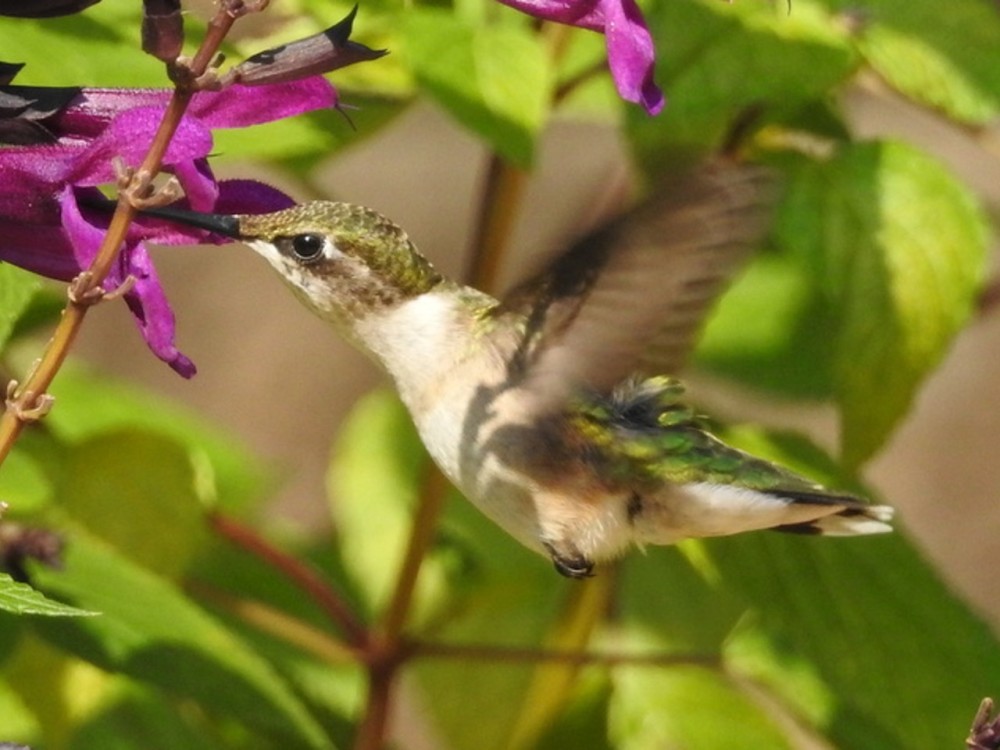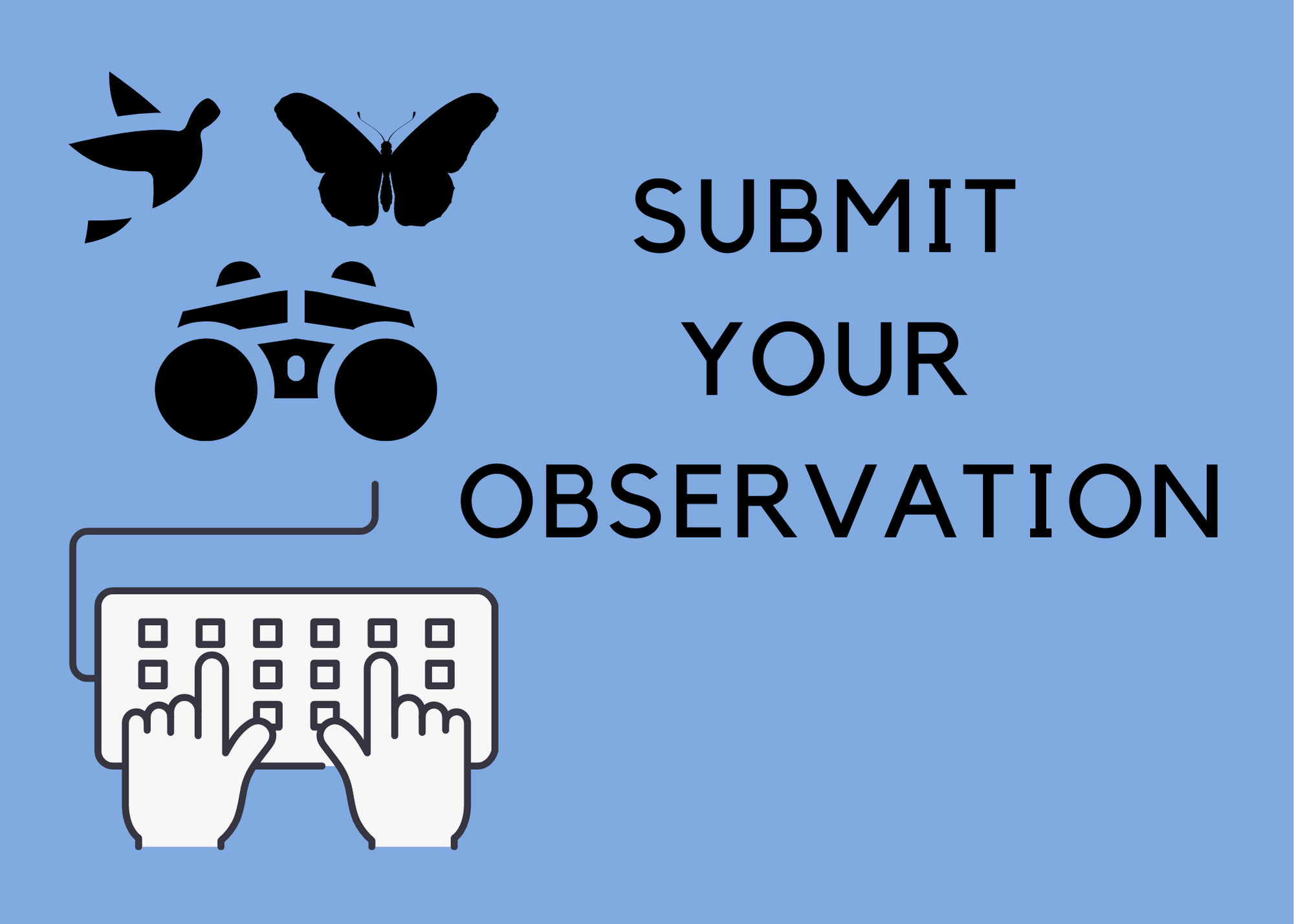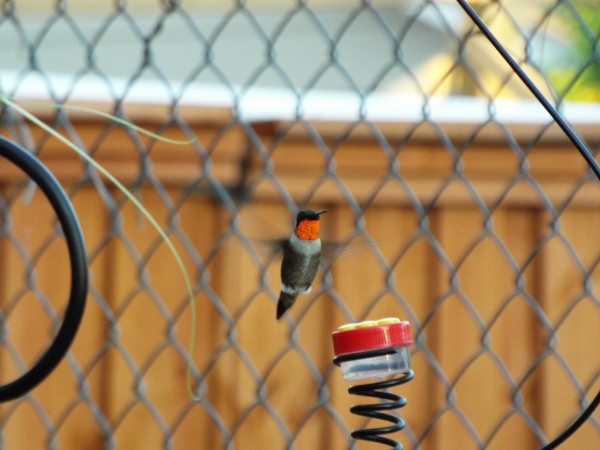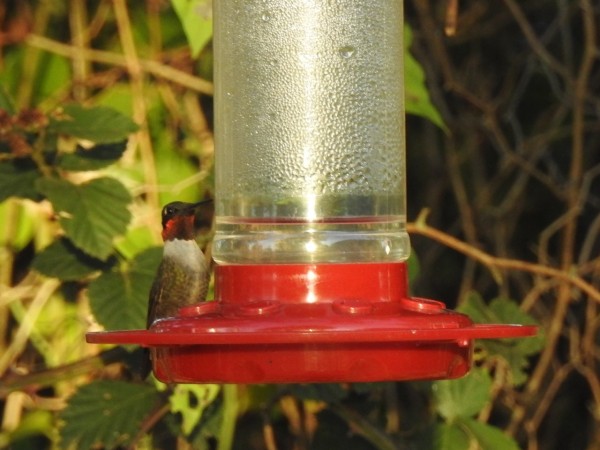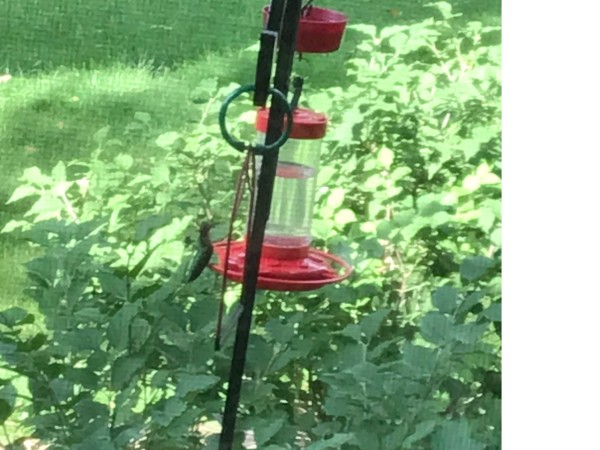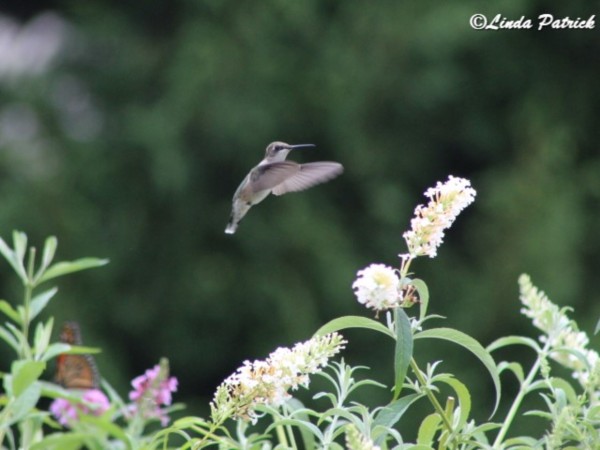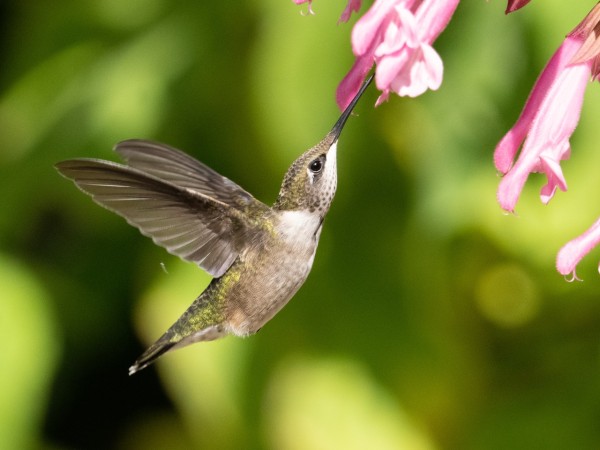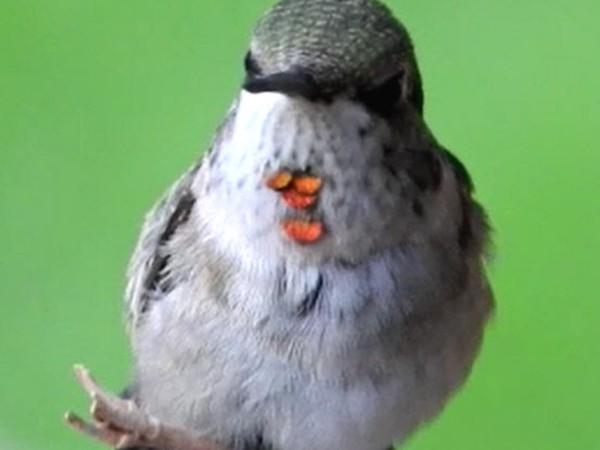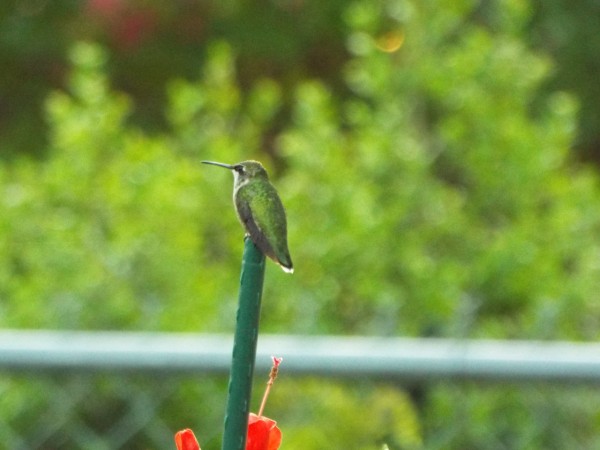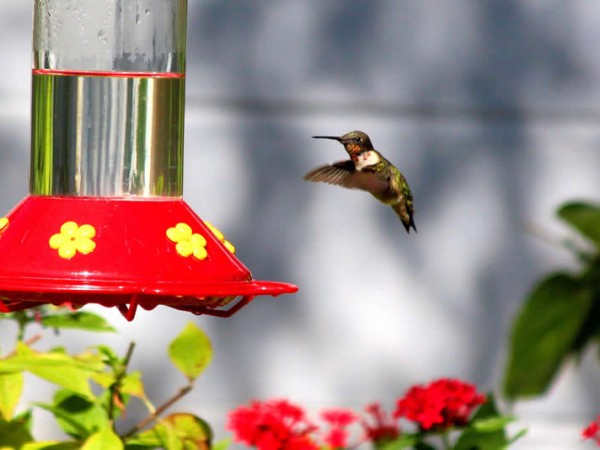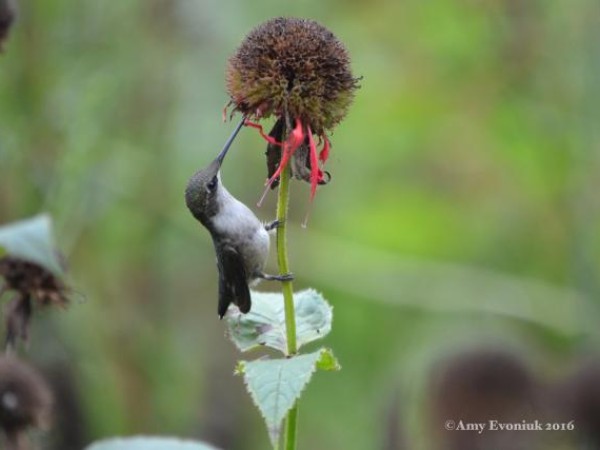On Their Way South
Fall officially begins in the Northern Hemisphere on September 22nd, the autumnal equinox. Hummingbirds are making their way south to catch the official start of spring in the Southern Hemisphere. Keep reporting your observations of hummingbirds to Journey North!
Migration Underway
Many adult males have already headed south and more females and juveniles are following suit. As migration progresses, reports of adult males tend to drop-off, even in more southerly locations in the U.S. Are you still observing adult male hummingbirds? If so, we encourage you to report your observations under the category Fall: Hummingbird Sighting (Adult Male). These reports allow researchers to better determine “last seen” dates.
Clara in Angleton, TX: "I went from 30+ hummingbirds yesterday to ~5 today. I guess they took a ride to Mexico on the front that came through. Numbers are picking back up this evening and new ones are showing up! I was surprised and thrilled to see a juvenile Rufous hummingbird! Not very common in this area!" (09/08/2022)
Fall Nectar Sources Still Important
Hummingbird activity levels tend to peak in the evenings and mornings, and remain relatively quiet during the day. Ornithologist and longtime Journey North contributor Laura Erickson explains:
“Hummingbirds are migrating by day. They land while it’s still afternoon if they see a good place to fuel up for a few hours. Then they find a safe place to sleep. They must also do a lot of feeding again in the morning before they take off. It’s different for the local hummingbirds not yet on the move: Mid-day is when they can get the most insects and when most flowers are open so they can get natural foods. But locals also do the quick-energy feeding frenzy in the evenings and mornings.”
Our observers are noting the same behaviors.
Barbara in Irving, TX: "...They want their drinks from the feeders first thing in the mornings, along with nectar from the Turks Cap flowers. Day started out nice and cool with 64 degrees and expected high is 90 degrees, sunny and no rain in the forecast. I will put my feeders in area that get first morning light, that's why I've been lucky enough to get his bright red throat in the pictures so many of the times. I'll move the feeders to shade after about one hour of morning light or sooner..." (09/14/2022)
Vivian in De Leon, TX: "I saw two male Ruby-throats at my feeders this morning." (09/20/2022)
Mostly Females and Juveniles in the North
Signs of fall are all around: Day length is shortening, flowers are fading, and night temperatures are dropping. While many hummingbirds have already left in the northern parts of their breeding range, some females and juveniles still remain. Females and young hummingbirds are still seen nectaring as far north as Ontario.
Russell in Saskatoon, SK: "One Ruby-throated hummingbird still in yard catching flying aphids and nectaring at feeder station. Pictured sitting on a clothesline with back to photographer." (09/13/2022)
Toni in Anoka, MN: "She’s been coming around every day. There’s more than one...maybe three or four females. She spends more time in the garden with the flowers." (09/16/2022)
Linda in Chatham, ON: "2 Hummers today feeding at butterfly bushes, zinnias and also the feeder. Waystation #13039." (09/18/2022)
Marjorie in Lowell, MI: "Juvenile ruby-throated hummingbird feeding on the skyscraper pink salvia. The little dots on the gorget seem to indicate that this is a young male and those feathers will soon be turning fully red. I expect the hummingbirds to be here for another 10 days to 2 weeks. I can already see the body shapes enlarging." (09/19/2022)
Gulf Coast Uptick
Journey North citizen scientists along the Gulf Coast are noting more hummingbirds and intense feeding. Is this the beginning of a surge in sightings?
Ed in Farmers Branch, TX: "Very young male just starting to show a few (4) ruby feathers in his throat patch "gorget". Still picture taken from a video I took today." (09/11/2022)
Barbara in Irving, TX: "First time I've seen on perch on the plant stake. I have tall plant stakes that I will stake up some of the Turks Cap stalks. Seeing three hummingbirds this morning." (09/14/2022)
Watch the Weather and Keep Reporting
Weather affects the flight of hummingbirds as they make their way south. Migration is already a perilous time of life for these small birds, and hurricanes and other inclement weather add more challenges. Hummingbirds have been found to “wait out” storms. However, after extreme storm events, hummingbirds may have problems finding enough food sources. Others may have been driven far off-course. Check out Windy.com to explore how weather may affect hummingbird migration in your area.

